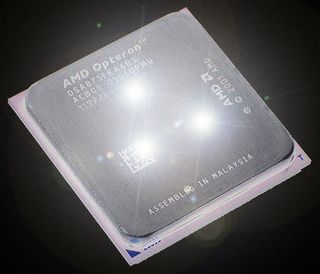Are Three Cores Better Than Two?
Conclusion

As you could see, the fact that we used two rather different Opterons for putting together the triple core system had an impact on the benchmark results that was hard to predict. Performance depends on the level of a program's thread-optimization, but we also had a hard time with some particular benchmarks.
Some did not work at all (AutoGK w/ DivX or Xvid, Pinnacle Studio 9 Plus). For others, performance was worse than that offered by a dual-core Opteron 275 configuration (such as with memory benchmarks, ScienceMark, WinRAR file compression and Windows Media Encoder). However, the majority of software we used was able to scale well thanks to the third core (which was the case with Cinebench 2003, PovRay 3.7, Cinema 4D R9 and 3DS Max 7).
However, we do not intend to encourage people to go for asynchronous core configurations. This may be an option for very few users only since AMD or any other party would probably never want to validate such a setup. Matching two different processor types by their core technology and validating whether all the software that you need does actually run both faster and reliably certainly is not worth the effort.
In fact, the overall positive outcome of this project makes it obvious that developing a processor with three cores on a die might not be as absurd as it might seem. Adding one more core to existing designs could be performed within a reasonable time since there is not much complexity in today's dual-cores when compared to single-core designs: AMD uses HyperTransport for core communication and Intel has its Front Side Bus.
Three cores would help to shorten the time until 65 nm devices become available for quad cores, which would thus help AMD and Intel boost the performance-per-watt ratio of their devices.
Stay on the Cutting Edge
Join the experts who read Tom's Hardware for the inside track on enthusiast PC tech news — and have for over 25 years. We'll send breaking news and in-depth reviews of CPUs, GPUs, AI, maker hardware and more straight to your inbox.
Most Popular

